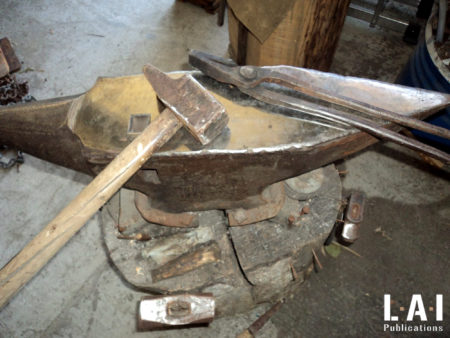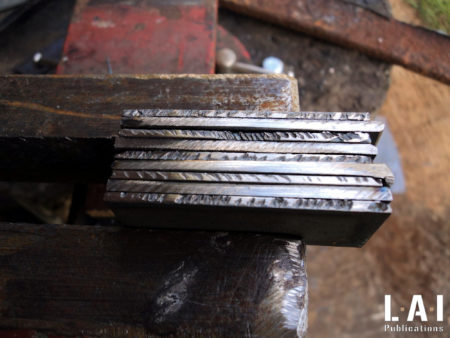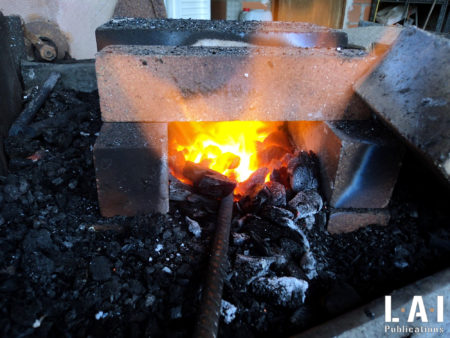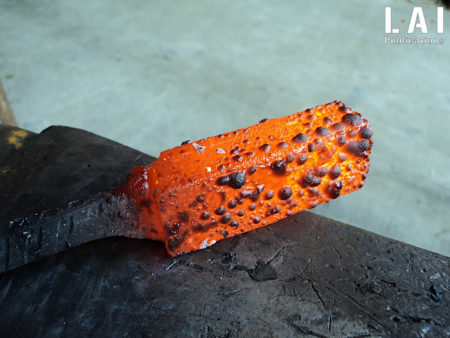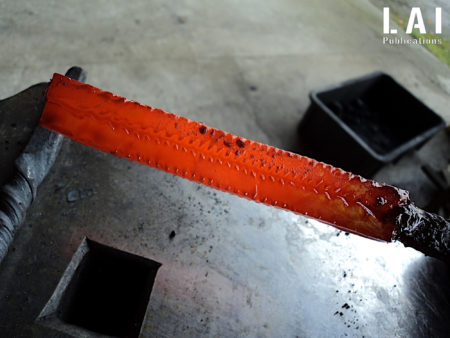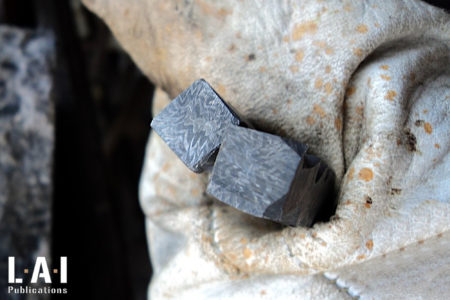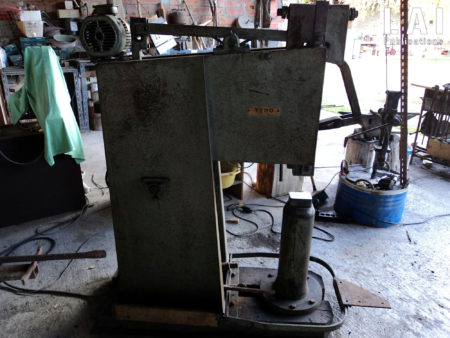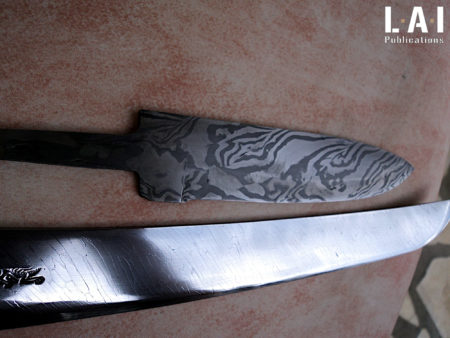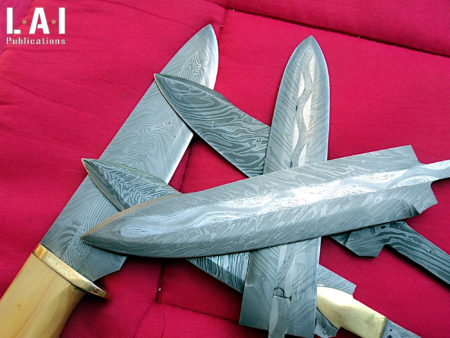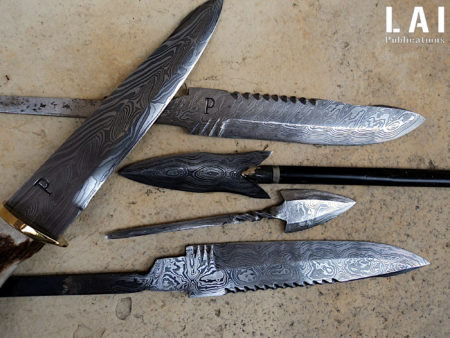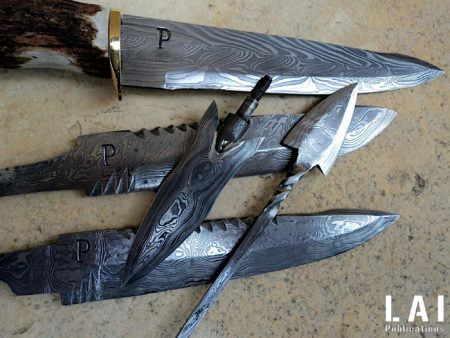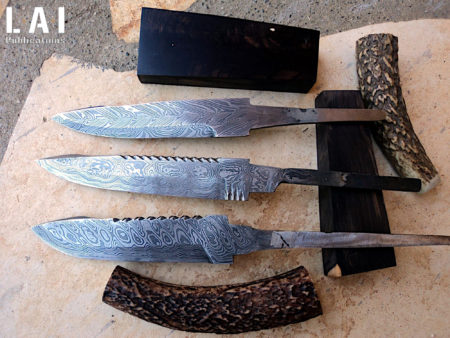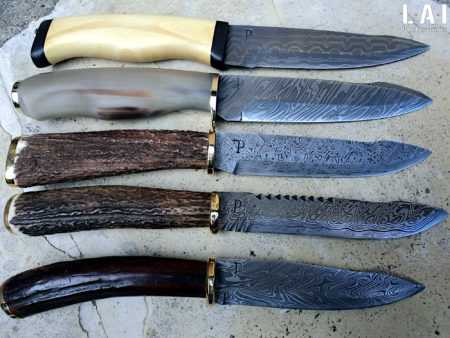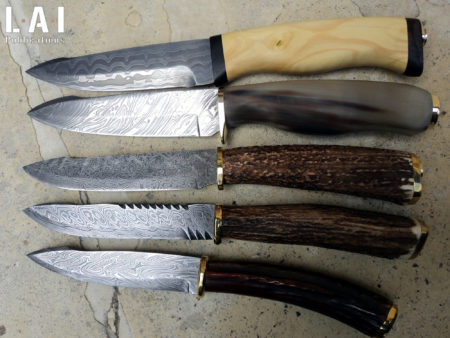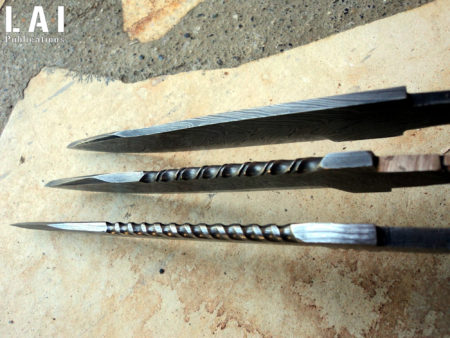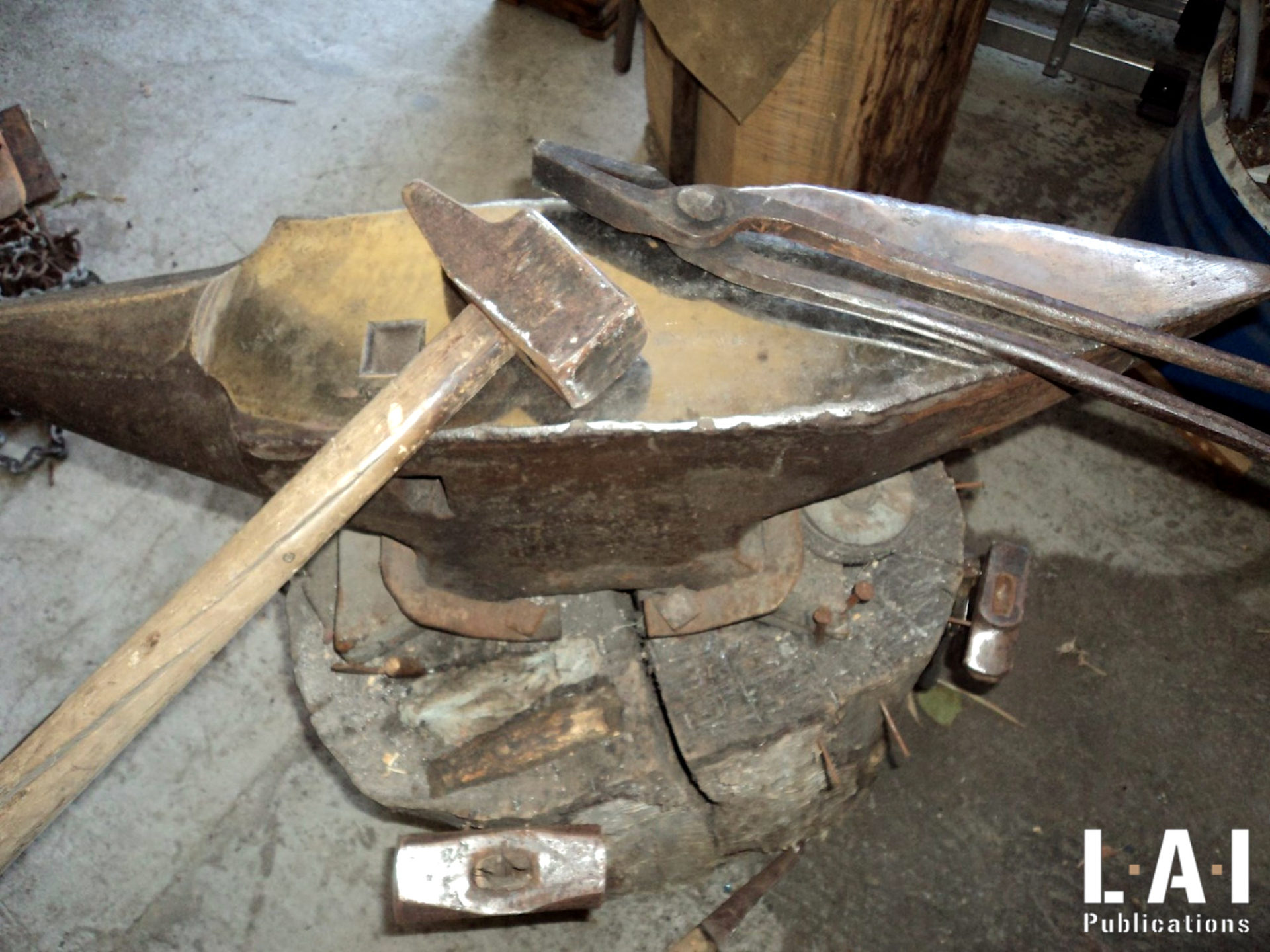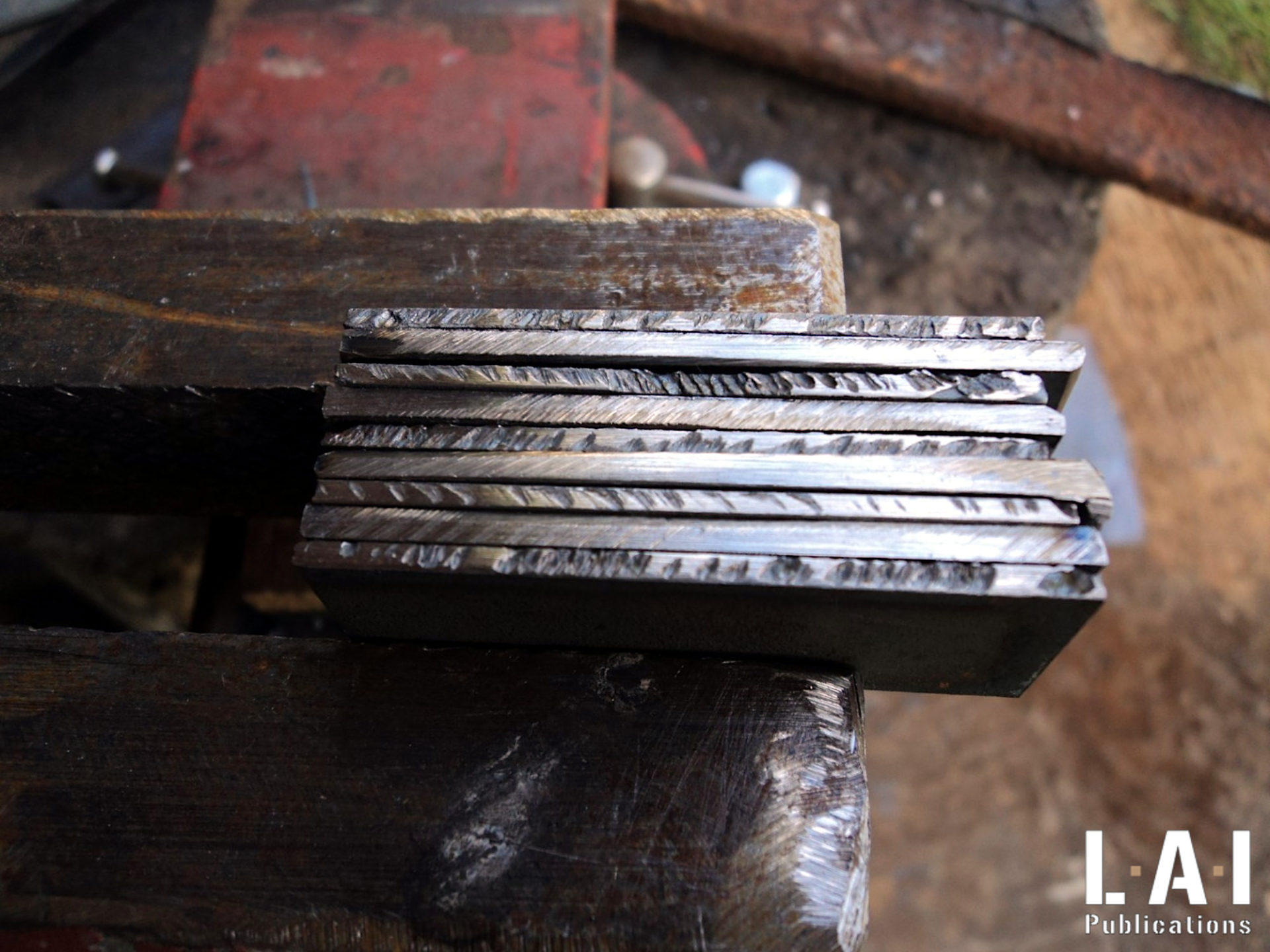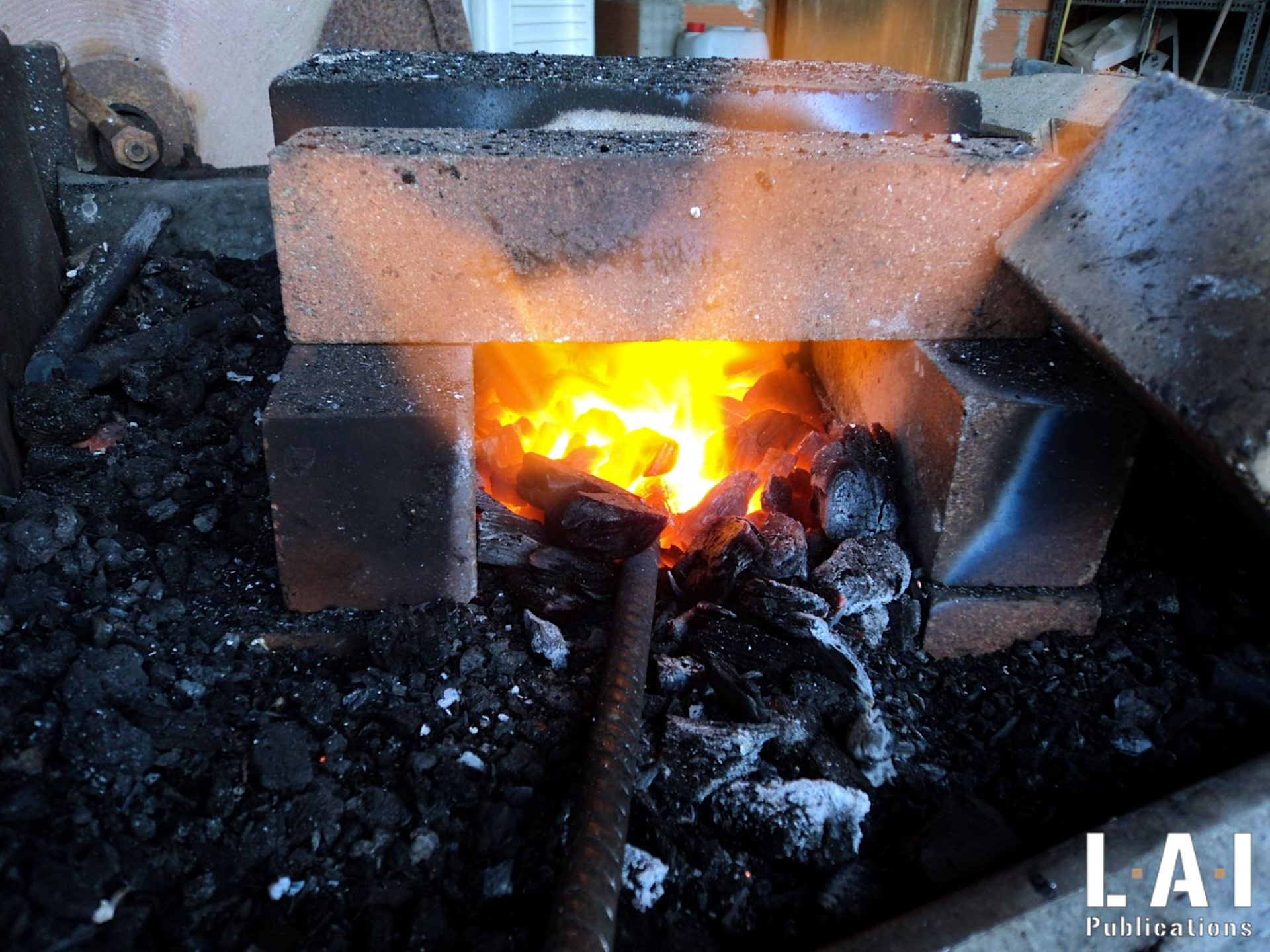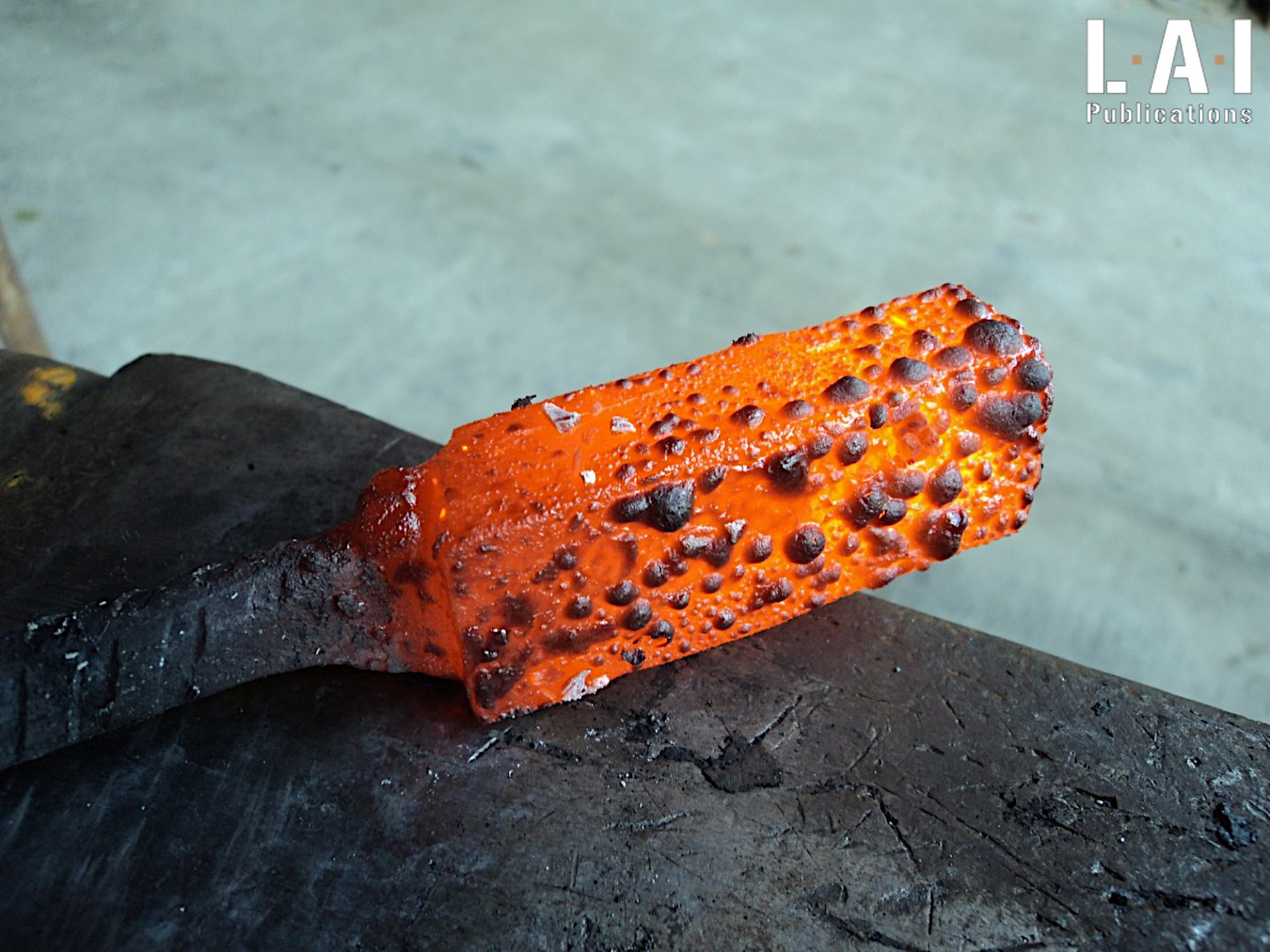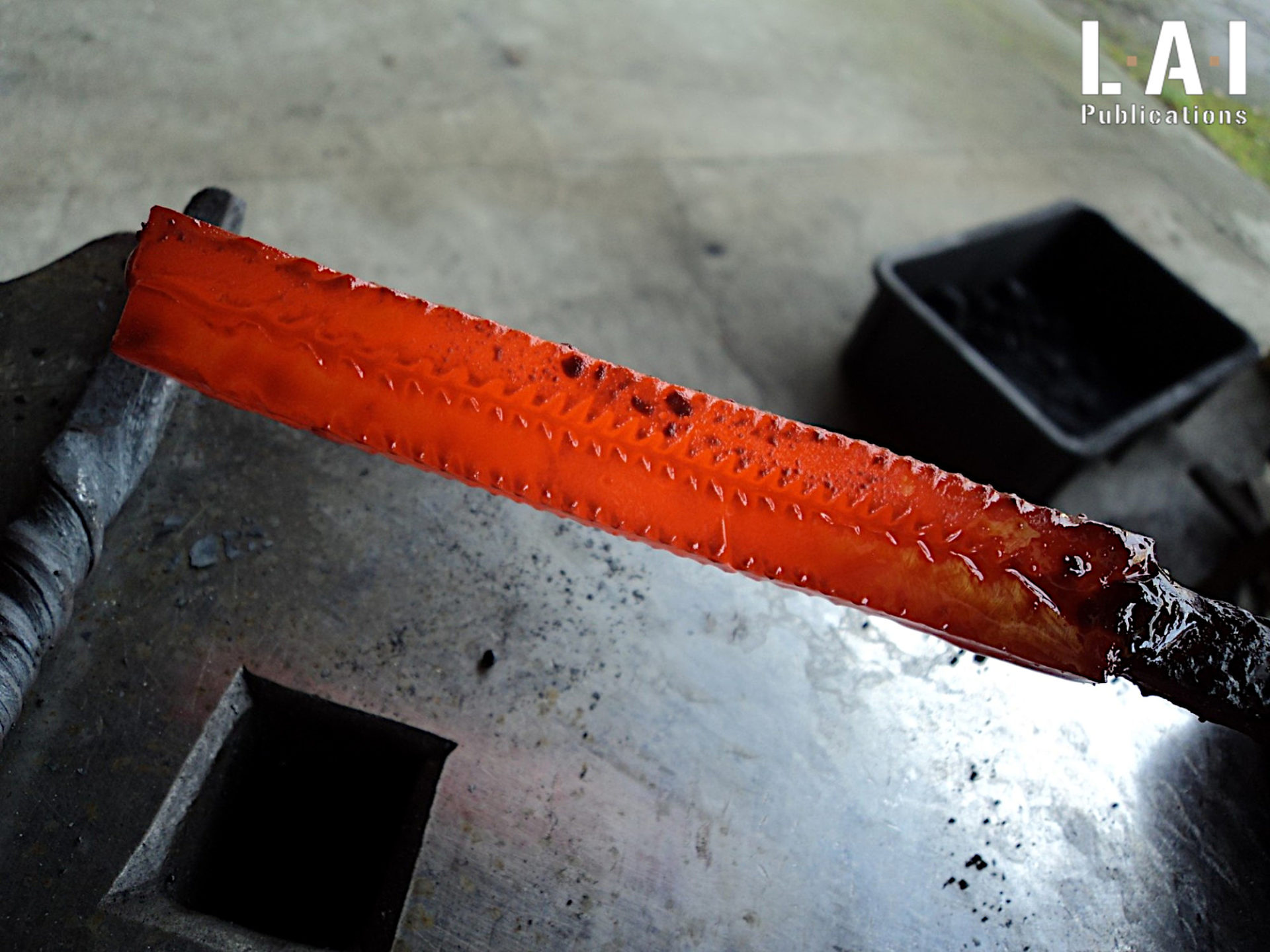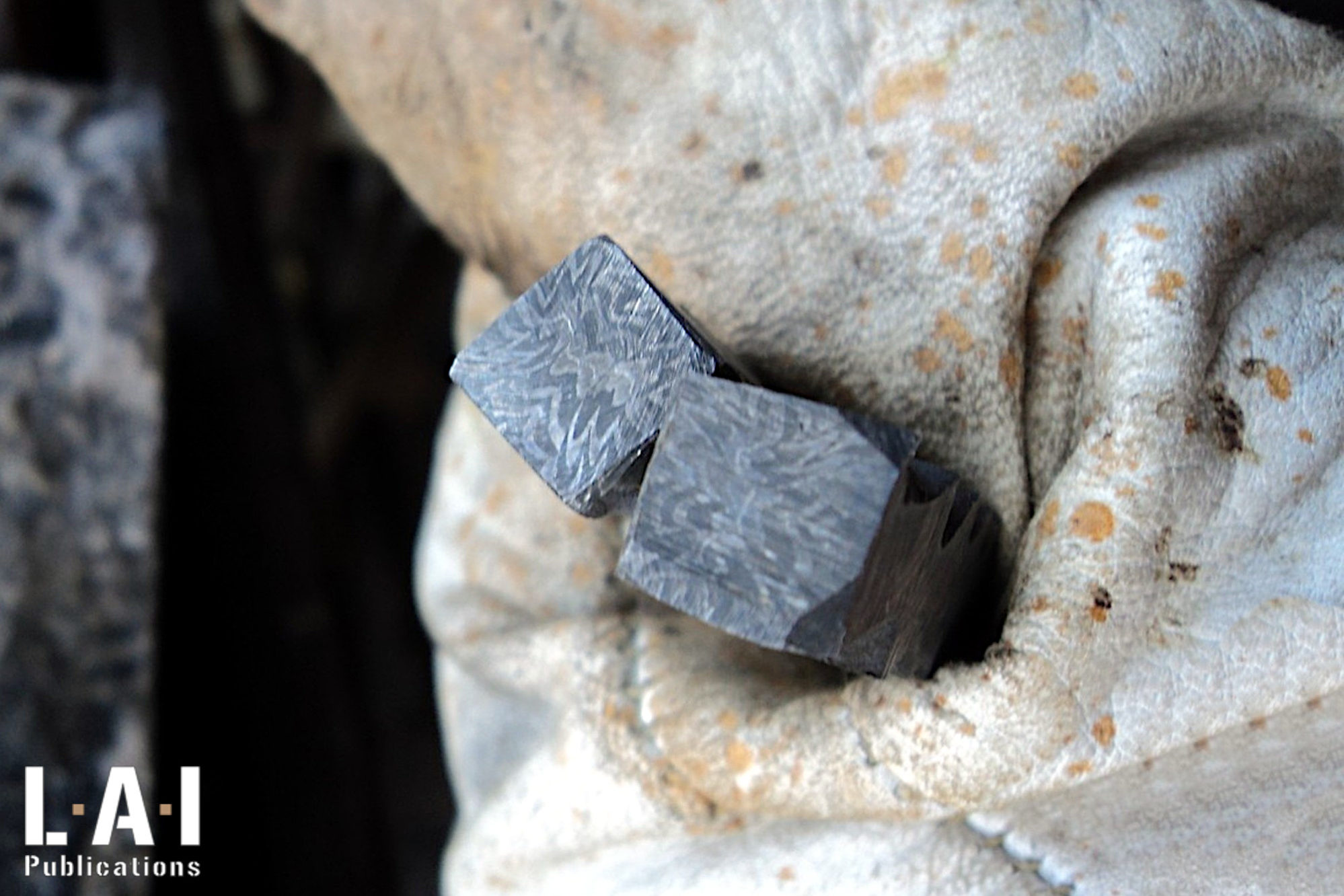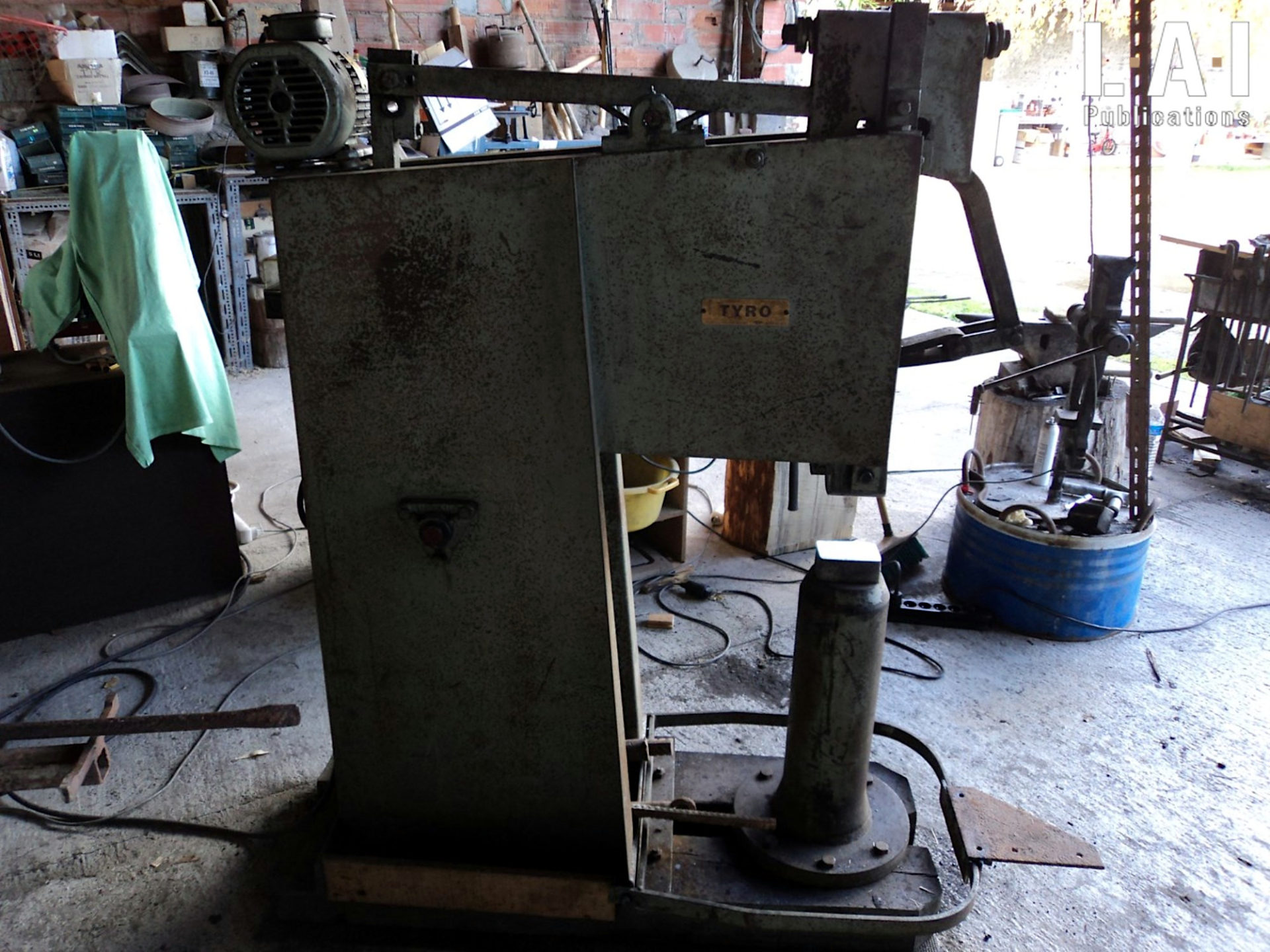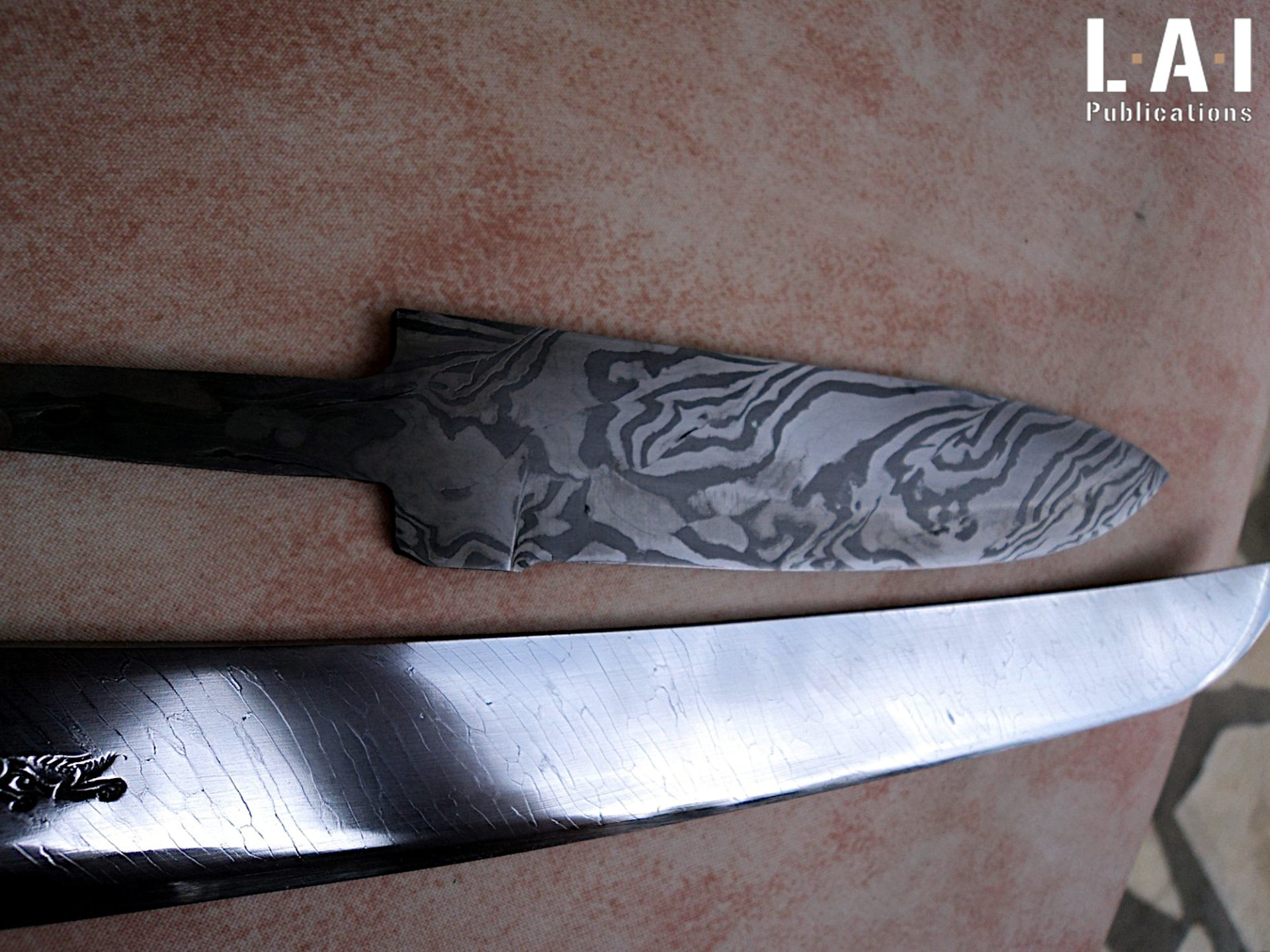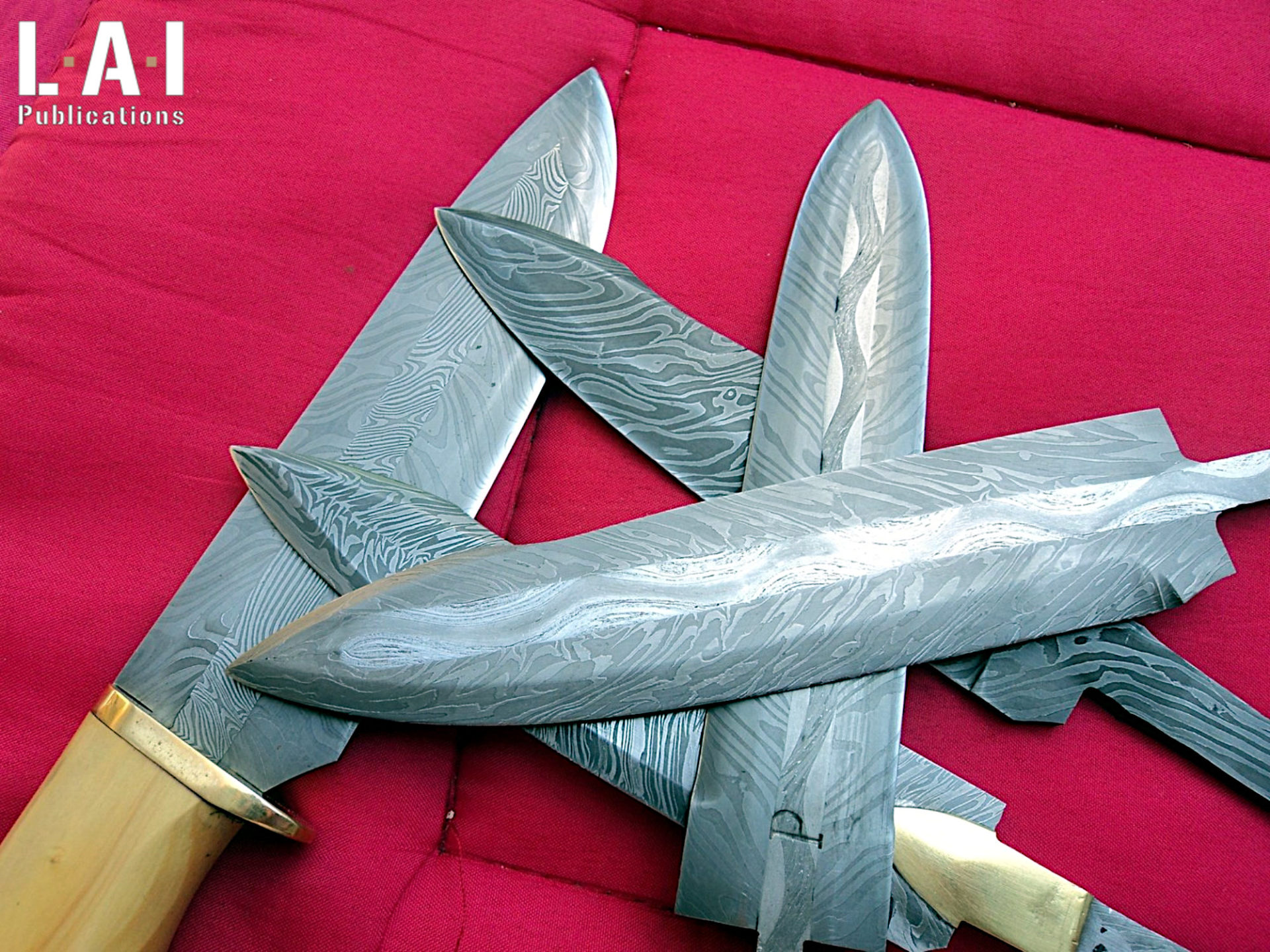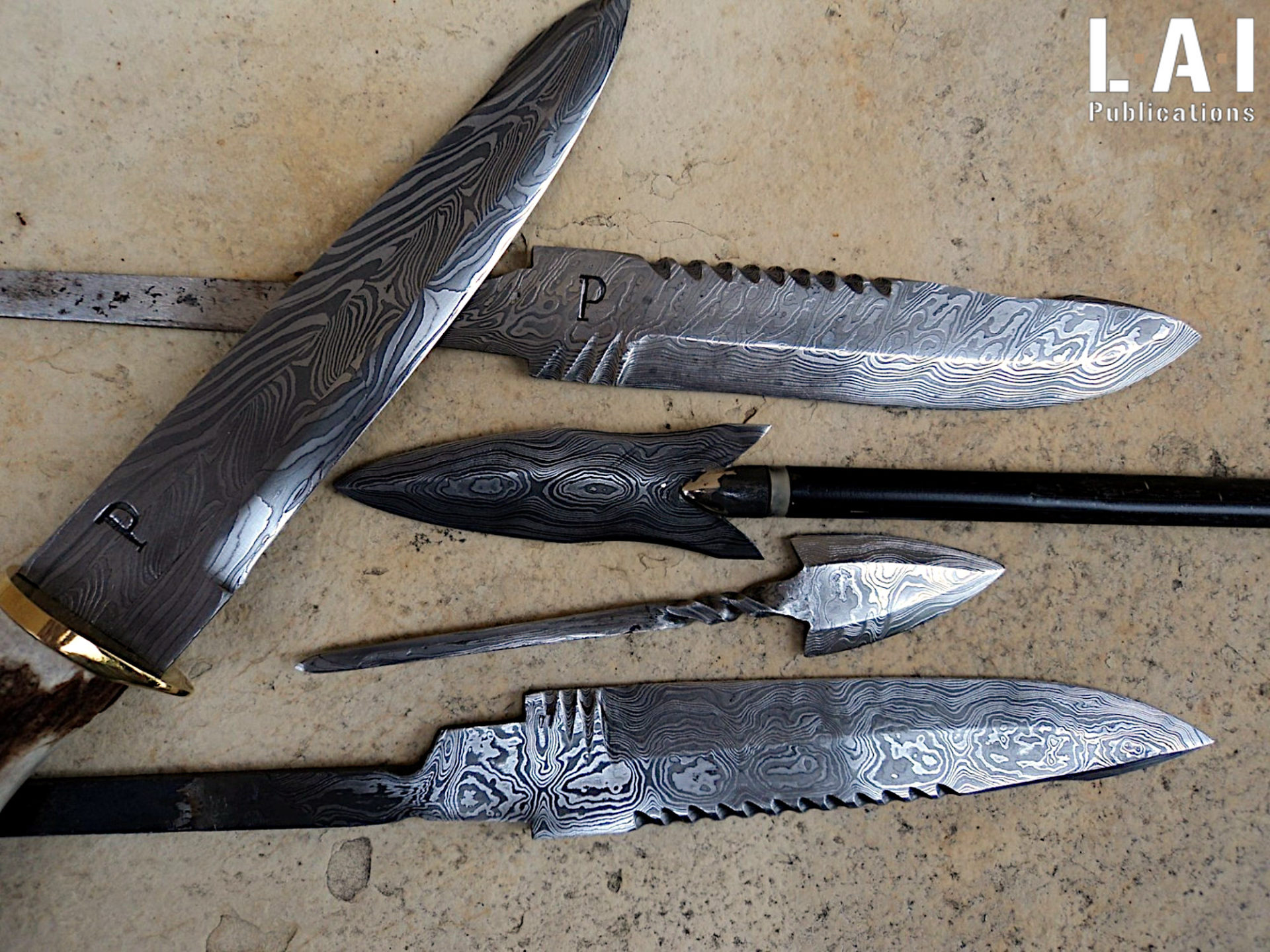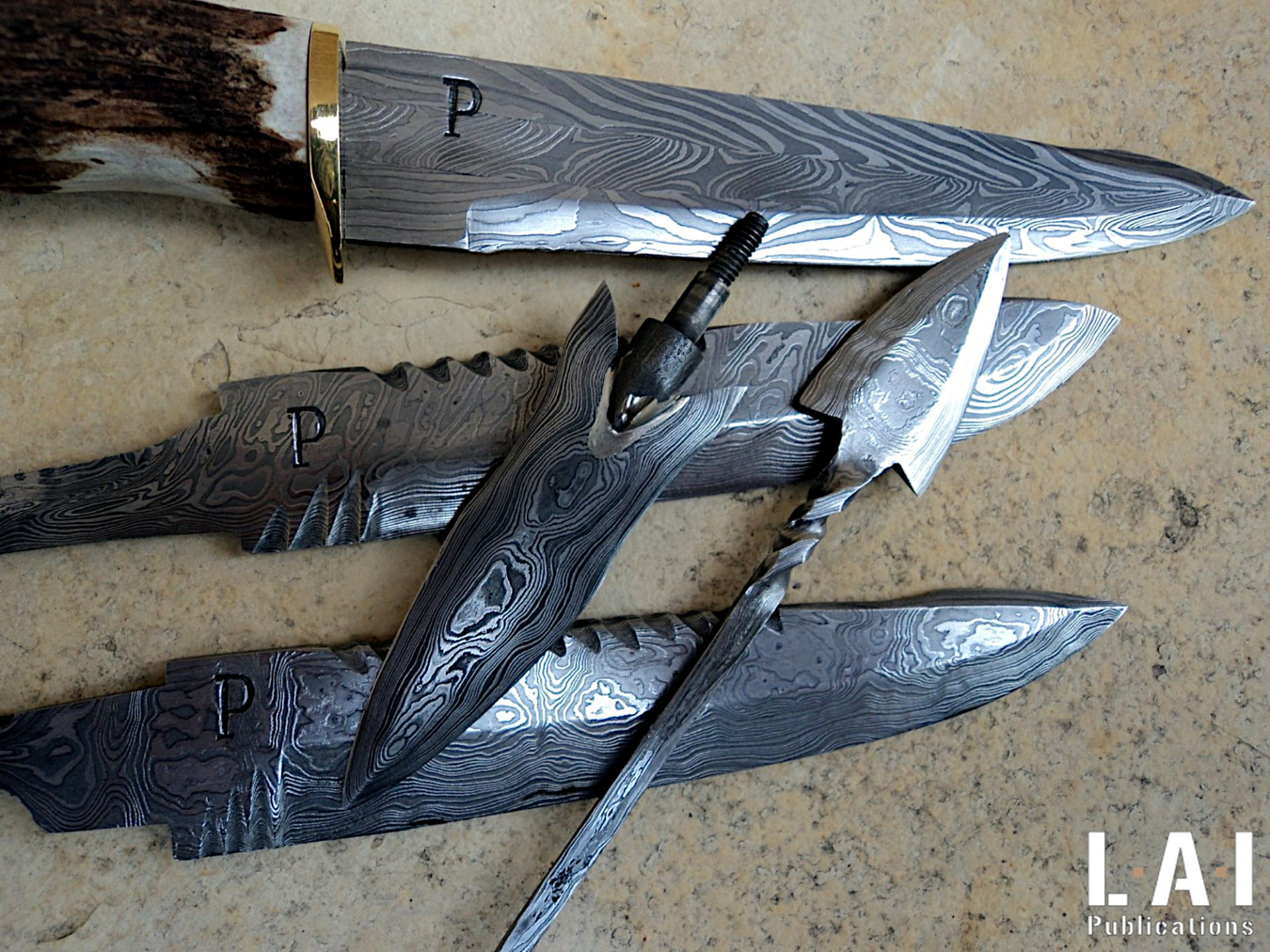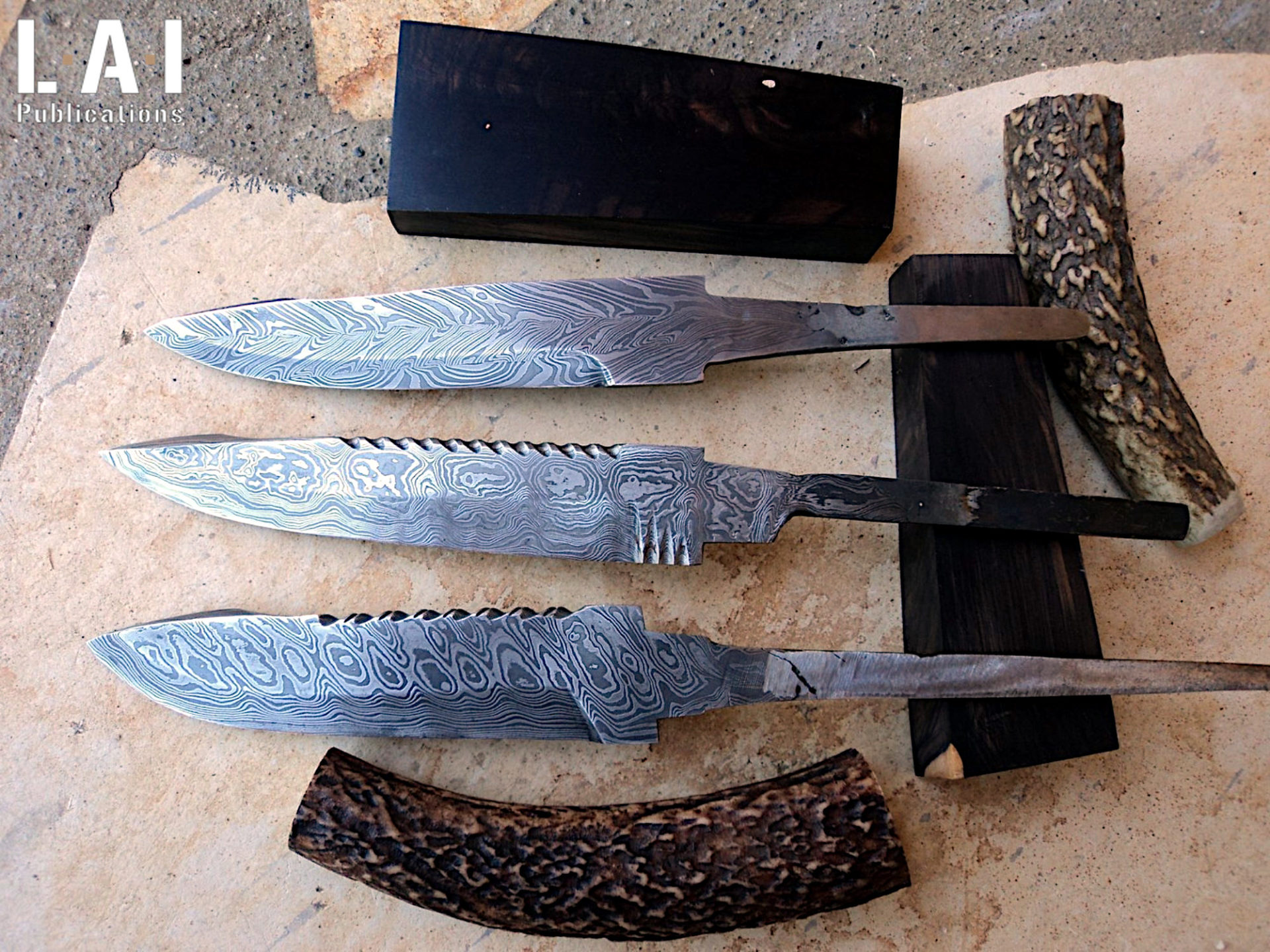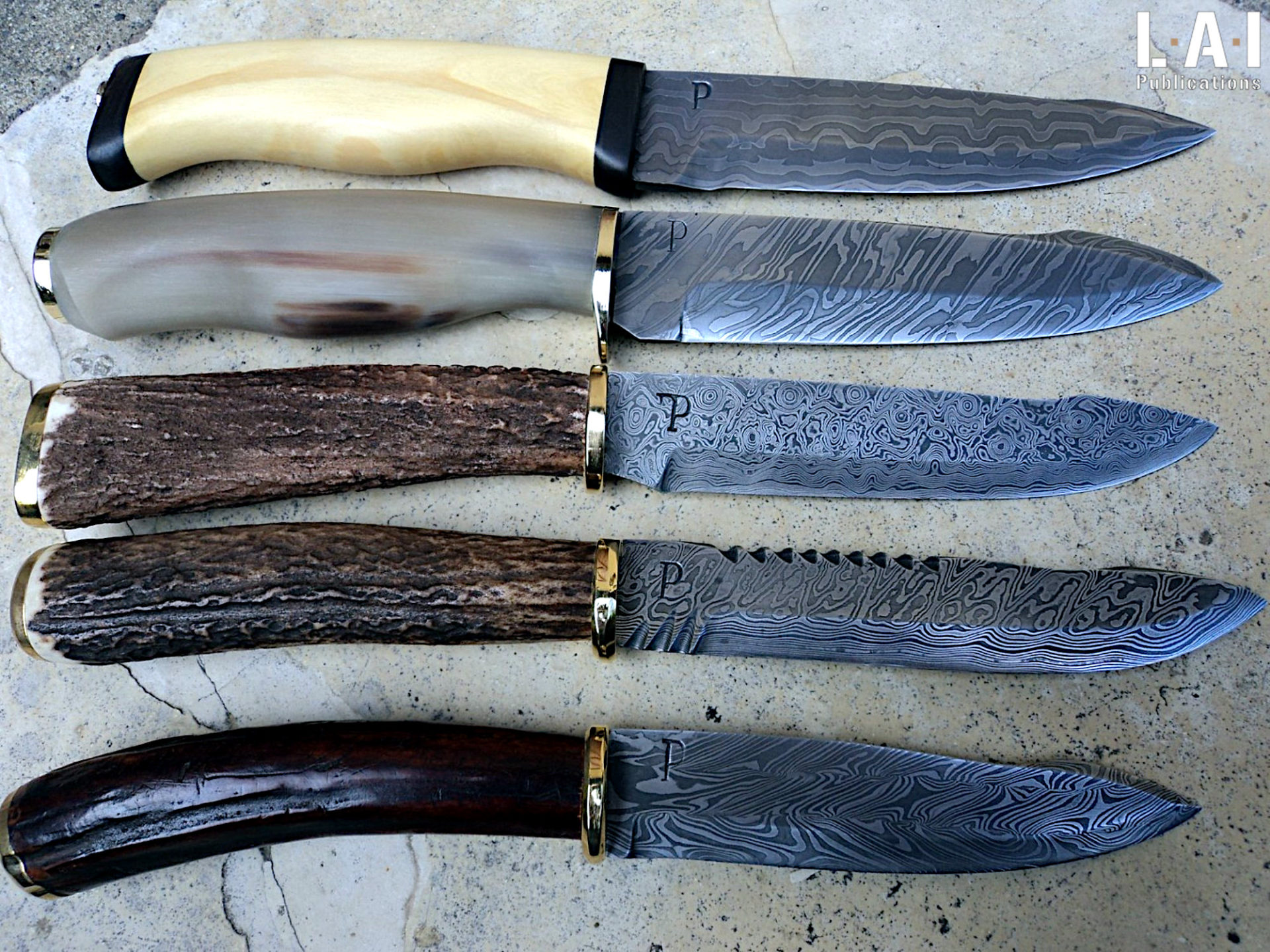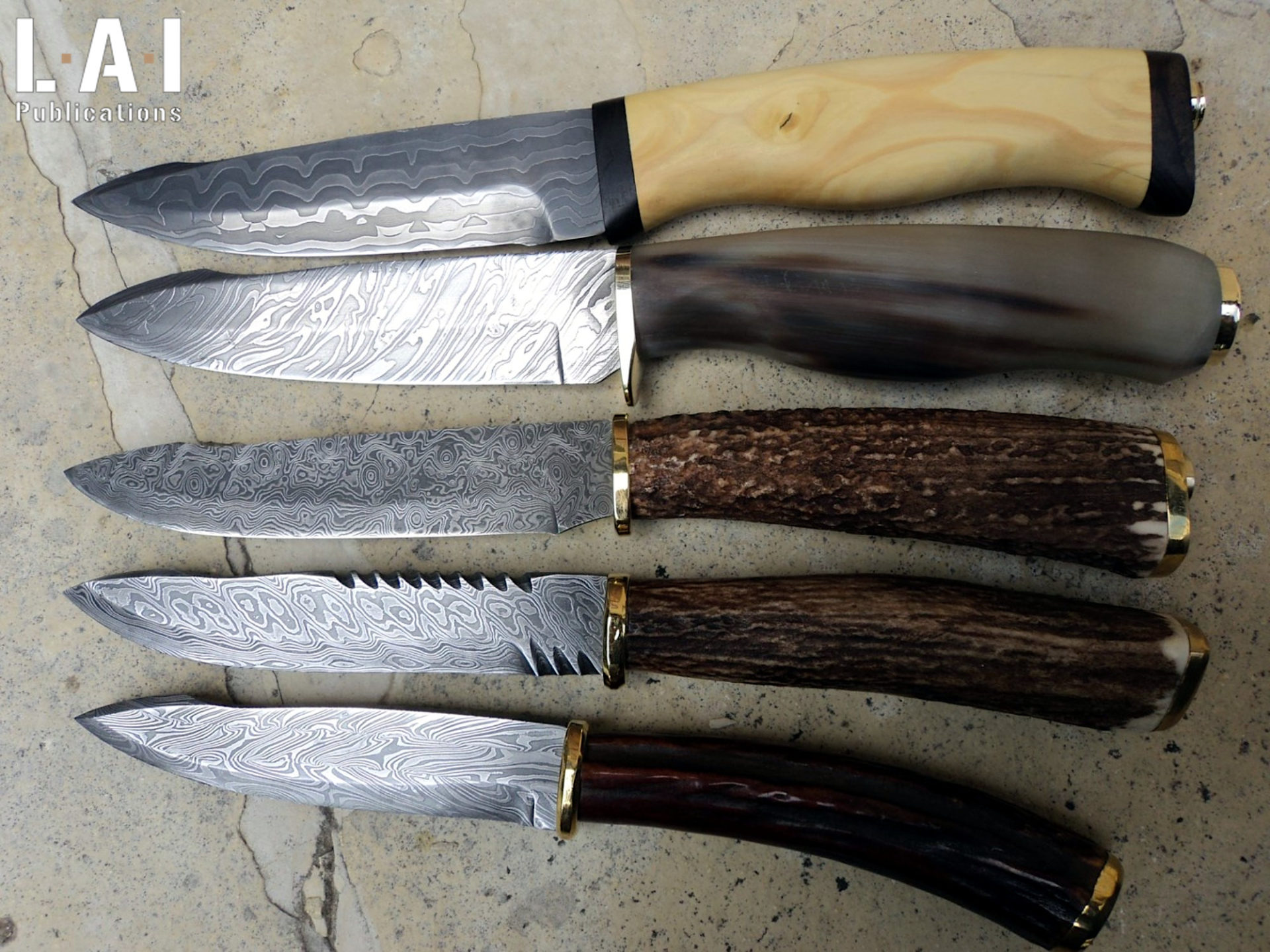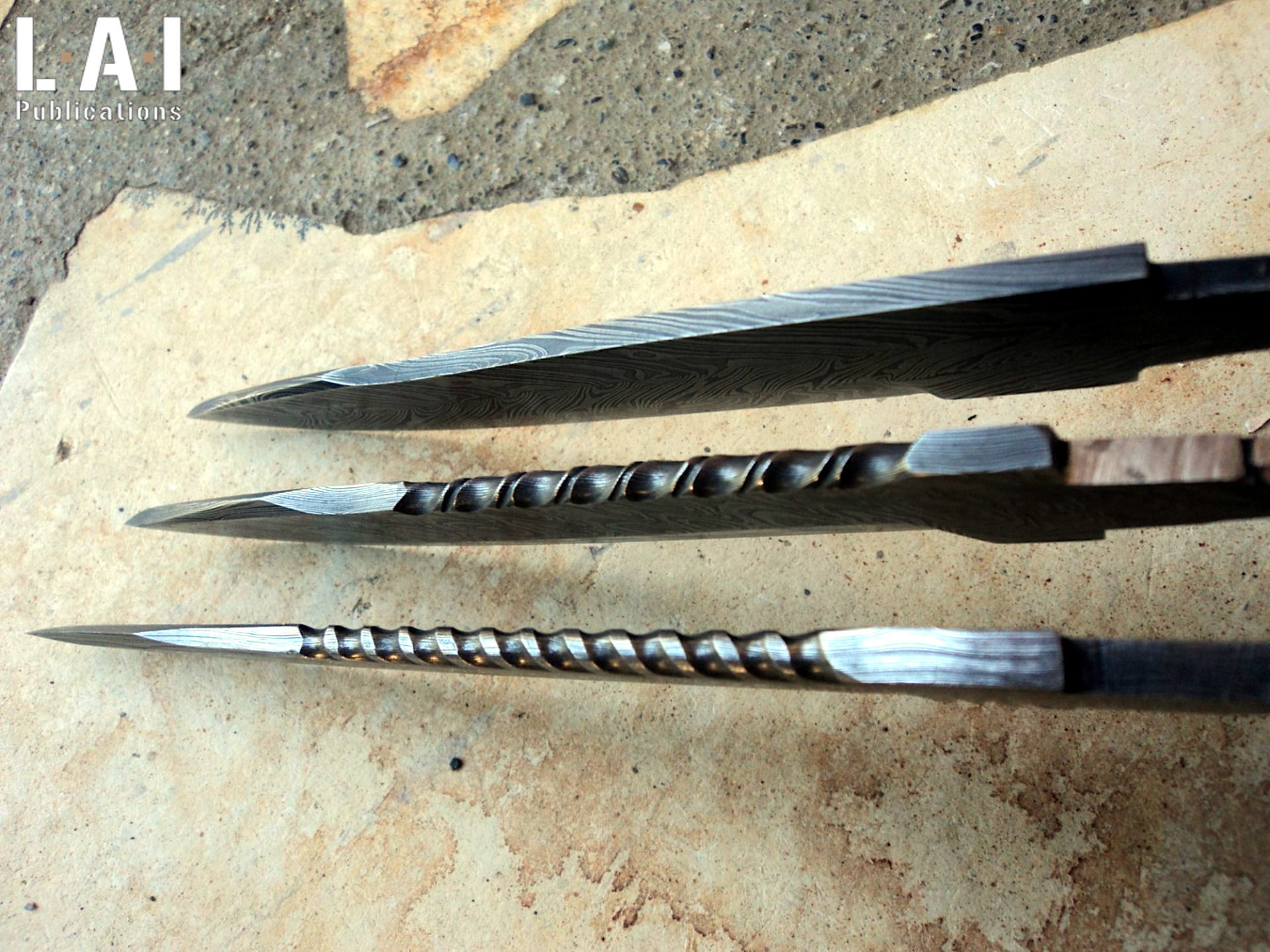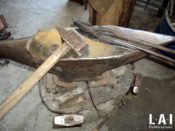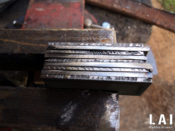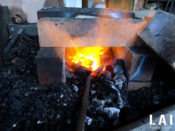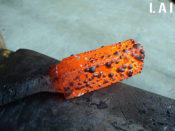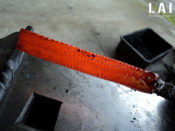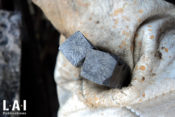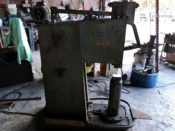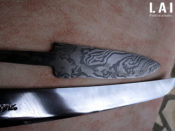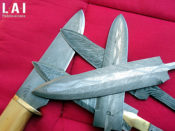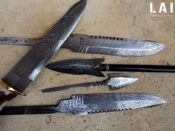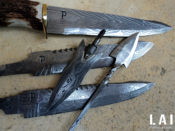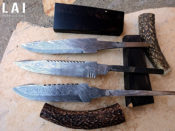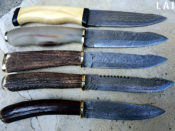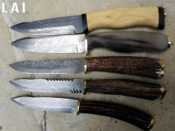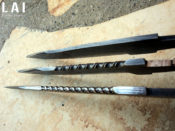Damascus from Comminges at the dawn of the 21st century

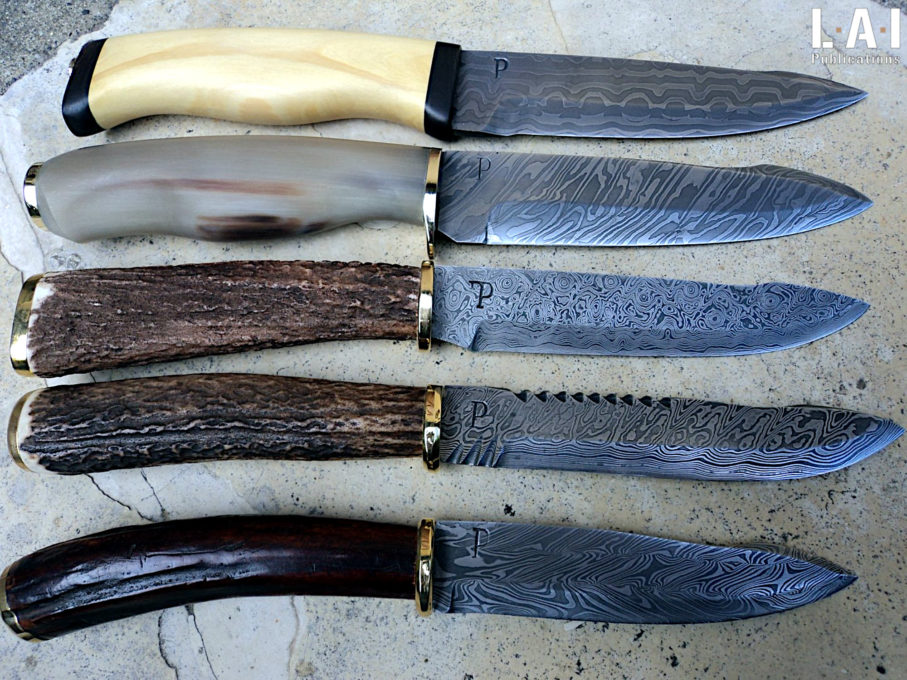
Our old friend and accomplice Alain Pons, brilliantly self-taught in many a thing, had one day the idea, when he saw on the one hand his ancestors’ forge, asleep under his shed, and on the other hand, a pile of excellent steel and springs from various agricultural wrecks, to try to forge knife blades to put his skills to the test and see if he could manage to do something with this bulky industrial waste!
After some preparatory tests to evaluate his skills, the bar was deliberately set high in imitation of Japanese masters and even more ancient blacksmiths from the early Middle Ages. It was therefore decided to attempt to produce wrought Damascus steel by intimately combining two kinds of steel with a different carbon content. Namely, a soft and flexible steel with a low carbon content and a harder but therefore more brittle steel so as to obtain a blade that was both strong and relatively flexible (Pic.02).
A first try was quickly attempted, and a piece of steel welded on a reinforcing bar used as a handle (the aim being to keep the pattern or the white-hot piece away from the craftsman’s hand!) was soon carried on a fire burning a mixture of previously degassed coke and wood charcoal. The experiment begins (Pic.03).
The gods lurking in the coal are activated under the bite of the flame and soon the steel that is presented to their voracity sees its temperature reach the magic threshold of 850°C, threshold where the hardness of the material must give way under the repeated shocks of the hammer and let itself be formed at the whim of the blacksmith! (Pic.04) The thick scrap metal is tamed and turns into a subtle docile and malleable substance at the whim of the forge master! This moment is fleeting, and soon the steel cools and begins to resist again. The sound it makes under the blows is more and more crystalline: this is the signal that it must be thrown back into the fire and presented again to the flames so that the blacksmith may continue to pummel it!
The same operation is performed on a piece of another kind of steel, then the two parts are twisted on themselves a counted number of turns and then welded side by side (Pic.05). The force of the fire is increased thanks to a large supply of oxygen using the hand-cranked bellows on one side and an improvised motor provided by the arm of a volunteer on the other, and the pattern consisting of the two pieces temporarily secured by some arc welding points is buried under a glowing coal vault!
A few moments later, the assembly goes beyond a bright cherry red (850°C) to reach a blinding white welding, the piece then showing the colors of a setting sun! The metal sweats, and its surface is colored in a white so pure it is almost impossible to look at!
The craftsman then quickly places the piece on his silent accomplice, the anvil, and in a few well-adjusted strokes intimately intertwines the two pieces by means of fusion and shocks, the sound rendered is clear and without appeal: the smith works as much by ear as by eye!
Through the jostling of a 2-kilos hammer or under the caress of a power hammer, a plate is quickly obtained from this brick-like shaped piece of metal. The equally distributed and scrupulously counted blows avoid the twisting of the blade when it is tempered.
The material is demanding and will not stand mediocrity: the slightest traces of rust would make the cohesion between the parts inoperative, and the work would be spoiled by simple negligence! The careful preparation of the metal plates is therefore scrupulously carried out, and perfectly clean and primed pieces of metal are subjected to the long work of forging. Depending on the desired pattern (supreme luxury, a skilled craftsman can in advance guess the pattern of the Damascus that he will obtain by counting the number of folds and twists) the plate is either twisted on itself or folded and welded again before being wrought to finally obtain the flat piece in which the future blade will be drawn.
The part slowly cools off in a bed of ashes, then undergoes three operations to overcome its internal tensions: to do this, the part is heated until it is red-hot and allowed to cool again slowly! Smithing is a school of patience where it is sometimes necessary to seize the fleeting moment when certain operations are possible only at this precise point in time!
A delicate passage to the “back stand” (abrasive band driven by an electric motor) while this time avoiding heating the part and cooling it often, or a patient work with the file roughs the black raw part to sharpen it into a white blade and give it the desired final shape! Quenching with water (or oil) is essential to harden the blade. It is necessary to pay attention on how to immerse the blade in the bucket of water and the temperature: indeed, if you dive the blade flat into it, the thermal shock will inevitably twist the blade, and a water that is too cold may have the steel become too weak and brittle! If one hears a characteristic and ill-foreboding snap when diving the piece into the water, it means the blade cracked during quenching and everything is to start over again! The temperature of the quenching bath is crucial, the most famous Japanese swordsmith to have ever lived, Gorō Nyūdō Masamune, is said to have cut clean off his apprentice’s hand when he caught him dipping his hand into the quenching tank to assess the temperature of the bath.
Once quenched, the blade has been tempered yellow and that gives it an acceptable flexibility while maintaining a nerve and rigidity compatible with its new-found purpose which will make the joy of the arm that will wield it! A final repolishing of the blade is necessary after this operation. An application of iron perchloride or some acid helps to reveal the drawings of the Damascus and at last reveals the final result. Because the acid gladly feasts on the carbon contained in the alloy and disdains the iron ore, so it happens that its action darkens the steely parts and leaves the iron atoms, virgin of any carbon, intact and shiny!
The blade finished, our friend can now devote himself to the manufacture of the guard which can be mounted with different styles according to the inspiration of the moment or according to the customer’s order. Then comes the manufacture of the sheath. I will now let you discover his exceptional works as your eye wanders through the images illustrating this article. Do not hesitate to contact Alain if an irrepressible desire to own one of these masterpieces becomes unbearable!
Gilles Sigro-Peyrousère
To contact Alain Pons : snoppy31220@gmail.com
This is free access work: the only way to support us is to share this content and subscribe. In addition to a full access to our production, subscription is a wonderful way to support our approach, from enthusiasts to enthusiasts!


